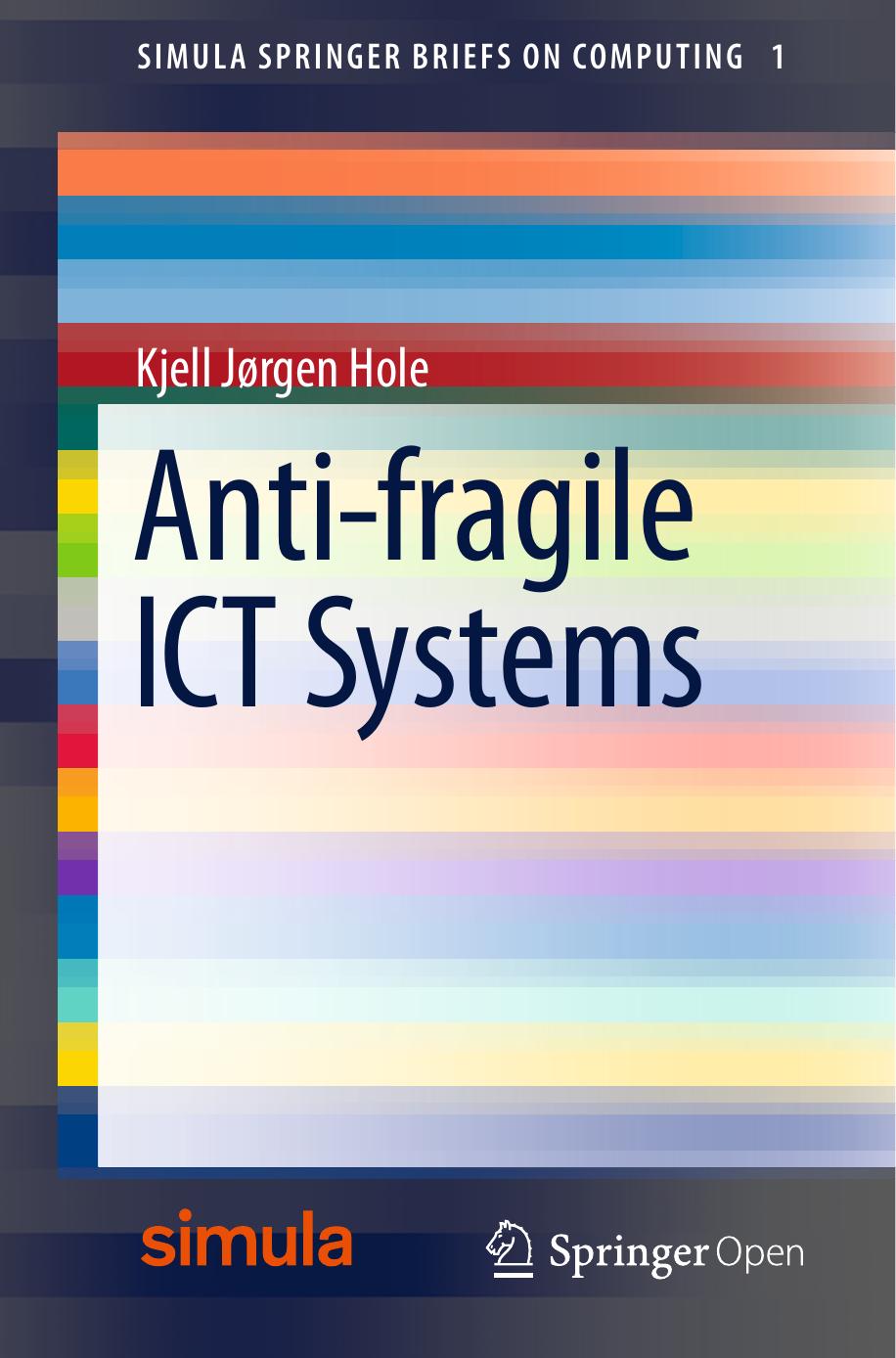Anti-fragile ICT Systems by Kjell Jørgen Hole

Author:Kjell Jørgen Hole
Language: eng
Format: epub, pdf
Publisher: Springer International Publishing, Cham
7.4 Robust Access Networks
Using the above understanding of fragility to downtime in telecom infrastructures, we now consider how to make future infrastructures robust to downtime. The expected seamless integration of Wi-Fi and mobile network technologies and the emerging Internet of Things will lead to a massive increase in the number of mobile and stationary devices connecting wirelessly to telecom networks. Many believe that machine-to-machine communications supporting smart grids, smart homes and cities, and electronic health will be particularly important. All the new devices and new data-hungry services will lead to a huge increase in wireless data traffic. Examples of devices are notebooks, mobile phones, tablets, televisions, kitchen appliances, smartwatches, 3D glasses, drones, robots, sensors, and actuators, while examples of services involve high-definition video available anywhere, continuous real-time interactions between individuals, and medical sensors monitoring people’s health.
To fulfill future communication needs in a power- and frequency-efficient manner, the deployment of multiple layers of radio coverage is most likely necessary where traditional macrocell towers provide a blanket of coverage while, under the blanket, thousands of small cells provide high data rates in areas such as malls, airports, arenas, public plazas, urban parks, and business districts [63]. Because most devices will be close to base stations, it is possible to provide high data rates while keeping the signal power low. The use of small low-power cells enables the increased reuse of frequencies across cells. Today’s national telecom infrastructure with many access networks already has thousands of expensive base stations. In fact, the base stations constitute a large percentage of the total cost of current telecom networks. One attractive possibility to limit the costs of even more base stations is to move much of the stations’ functionality to the cloud.
High-speed links between the base stations and the cloud are needed to satisfy the stringent delay requirements enabling radio signal processing in the cloud. Data from multiple base stations can be used to alleviate the increased multi-cell interference due to reduced cell size by dynamically adjusting the radio signaling according to channel conditions. To further limit processing delays, use of a highly distributed cloud architecture with local access network clouds is possible, as depicted in Fig. 7.4, where each access network cloud consists of a cluster of commodity and special-purpose hardware. Hence, the access networks will become much more intelligent than they are today.
Fig. 7.4Possible architecture of cloud-based telecom infrastructure
Download
Anti-fragile ICT Systems by Kjell Jørgen Hole.pdf
This site does not store any files on its server. We only index and link to content provided by other sites. Please contact the content providers to delete copyright contents if any and email us, we'll remove relevant links or contents immediately.
Grails in Action by Glen Smith Peter Ledbrook(9163)
Sass and Compass in Action by Wynn Netherland Nathan Weizenbaum Chris Eppstein Brandon Mathis(8808)
Azure Containers Explained by Wesley Haakman & Richard Hooper(7444)
Configuring Windows Server Hybrid Advanced Services Exam Ref AZ-801 by Chris Gill(7433)
Kotlin in Action by Dmitry Jemerov(7263)
Running Windows Containers on AWS by Marcio Morales(6984)
Microsoft 365 Identity and Services Exam Guide MS-100 by Aaron Guilmette(5402)
Microsoft Cybersecurity Architect Exam Ref SC-100 by Dwayne Natwick(5212)
Combating Crime on the Dark Web by Nearchos Nearchou(4982)
The Ruby Workshop by Akshat Paul Peter Philips Dániel Szabó and Cheyne Wallace(4671)
Management Strategies for the Cloud Revolution: How Cloud Computing Is Transforming Business and Why You Can't Afford to Be Left Behind by Charles Babcock(4527)
Python for Security and Networking - Third Edition by José Manuel Ortega(4233)
The Age of Surveillance Capitalism by Shoshana Zuboff(4209)
Learn Wireshark by Lisa Bock(4123)
The Ultimate Docker Container Book by Schenker Gabriel N.;(3888)
Learn Windows PowerShell in a Month of Lunches by Don Jones(3681)
DevSecOps in Practice with VMware Tanzu by Parth Pandit & Robert Hardt(3568)
Windows Ransomware Detection and Protection by Marius Sandbu(3543)
Blockchain Basics by Daniel Drescher(3507)
